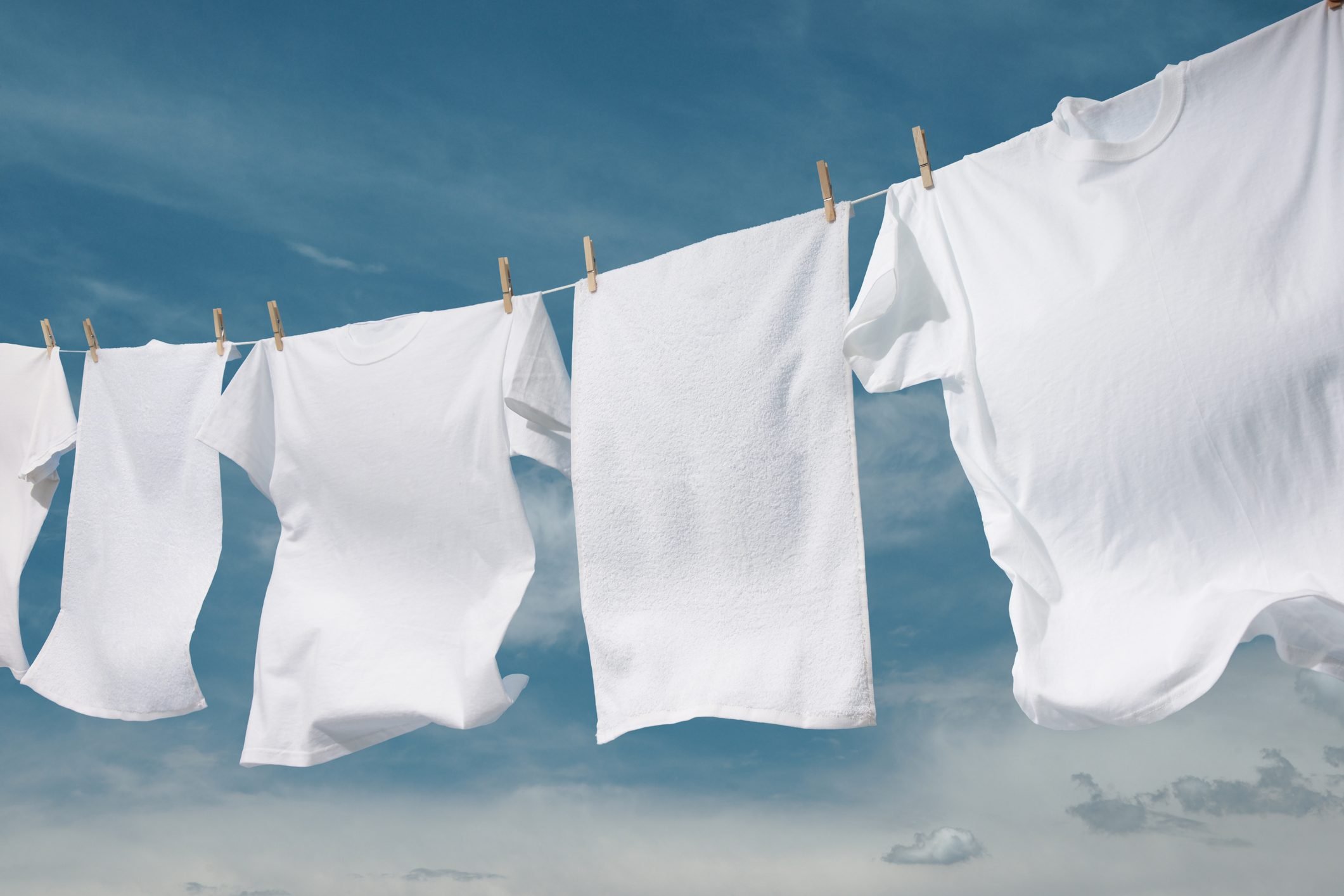Do you swear by hot, or are you a cold water fan? A laundry expert weighs in — you might be surprised!

What Temperature Should I Wash White Clothes In?

Start talking about laundry, and you’re likely to stir up some emotions. Particularly when the subject is water temperature.
Some people extol the virtues of hot, warm and cold loads, and laundry day is executed with machine-like precision. Others feel pretty good when they leave the house without a big stain on the front of their shirt. I’m one of those two people, but let’s keep up the mystery between us, shall we?
White clothing engenders particular fervor about temperature. My mom would die if she knew her children used anything but hot water for whites. Don’t tell her this, but my sister uses warm for everything, and she doesn’t even sort! No matter which side you come down on, surely there’s a correct answer, right?
Again, I called my friend Patric Richardson — author, laundry expert to the stars and bona fide YouTube celebrity. You can see him at his Mall of America store in Minnesota, or on television, or read one of his books on the subject: Laundry Love and How To Love Your Laundry.
Here’s what Richardson has to say on the contentious subject of whites and water temperature, right after we clear up some terminology.
On This Page
Wash Water Temperatures
First, let’s talk about what’s meant by hot, warm and cold.
Your clothing usually comes with instructions or symbols on the tag, and often, they’re less than self-explanatory. If you’re lucky, it’s written out. But even if the tag says the temperature, what do the numbers even mean? Sometimes they’re in Celsius! Your washing machine takes care of it most of the time, but what if you want to handwash?
Here’s how it all shakes out:
- Cold: This means between 65 and 85 degrees. The symbol for cold water wash is a single dot within a washtub.
- Warm: This starts at 86 degrees, and the max temp should be 105 degrees. Two dots in the washtub signify warm water.
- Hot: This goes up to 120 degrees, and the symbol for hot water is — you guessed it — three dots.
To verify the washing machine temperature, or if you’re handwashing and need to know the temp before dunking in your clothes, grab a digital kitchen thermometer and test the water.
Depending on where you live and the time of year, tap water may be colder or warmer than you’re looking for. Adjust the water temp as needed before washing.
Best Temperature for Washing White Clothes

“Always use warm,” Richardson says. “Always.”
If this surprises you, read on.
“The reason I don’t recommend hot…,” Richardson begins to say, then pauses for a moment. “You know, hot is safe for cotton. I mean it’s safe for color, it’s safe for whites. It’s fine.” So if you’re using hot for whites, you’re not doing anything wrong. But it’s not cleaning any better than warm, and it’s really rough on your clothes.
Here’s the issue with hot water: Polyester thread holds all cotton clothes together, which, Richardson says, “nobody ever thinks about.” Have you ever wondered why your towel edges crinkle up like bacon after a while? It’s because the polyester thread shrinks, due to repeated hot-water washes, followed by drying in a too-hot dryer.
It turns out detergent works best in warm water, too. Cold water reduces energy consumption. But ideally, soap needs a little heat. That’s why big-name brands make special cold-water formulations — higher temperatures just naturally work better.
“Warm water is warm enough to activate your soap or detergent,” Richardson says. And it won’t harm your clothes.
Additional Tips for Washing White Clothes
Richardson offers some final tips for getting your whites looking their best:
- Use oxygen bleach: When washing whites, skip the chlorine bleach. “People love to use bleach for their towels and sheets,” Richardson says. But it makes them yellow over time. (That bright white way they start out is actually a blue dye!) Oxygen bleach works better and is safe for all fabrics.
- Express wash is best: “You’re probably washing your clothes too long,” Richardson says. To counteract the environmental impact of using warm water, Richardson says, try a shorter cycle. “The express cycle is best for every single thing you clean,” he says. Whites included.
- Less is more: “The truth is: The less you do, the cleaner your clothes,” Richardson says. A full load of white sheets and towels only needs two tablespoons of detergent, so don’t fill up that cap even if the manufacturer “suggests” it.
- Try soap flakes: Detergent doesn’t rinse clean like soap does. Like fabric softener (another no-no), detergent sticks to your clothes and makes them look dingy if you overdo it. Wash whites in soap flakes to strip off all that residue and get your whites bright.
“We just make the process really hard,” Richardson says. “And I think some of the thing is, you want to do those extra steps because you think it’s better.”
Bottom line: It’s not! Wash less, use less, Richardson says. “It’s so much better for your clothes, and quite frankly it makes your laundry so much easier,” he says. “It makes your life simpler.”



















